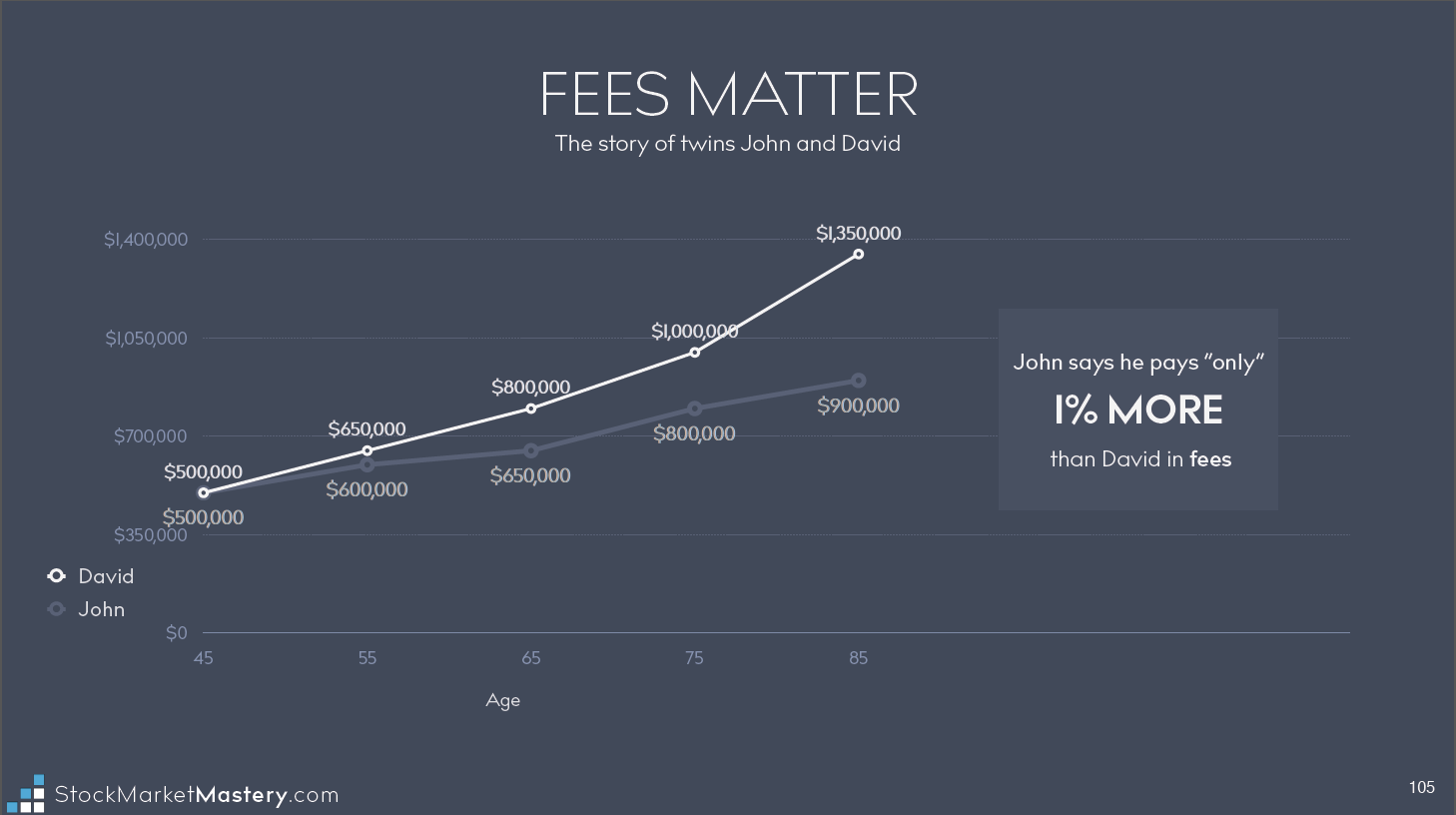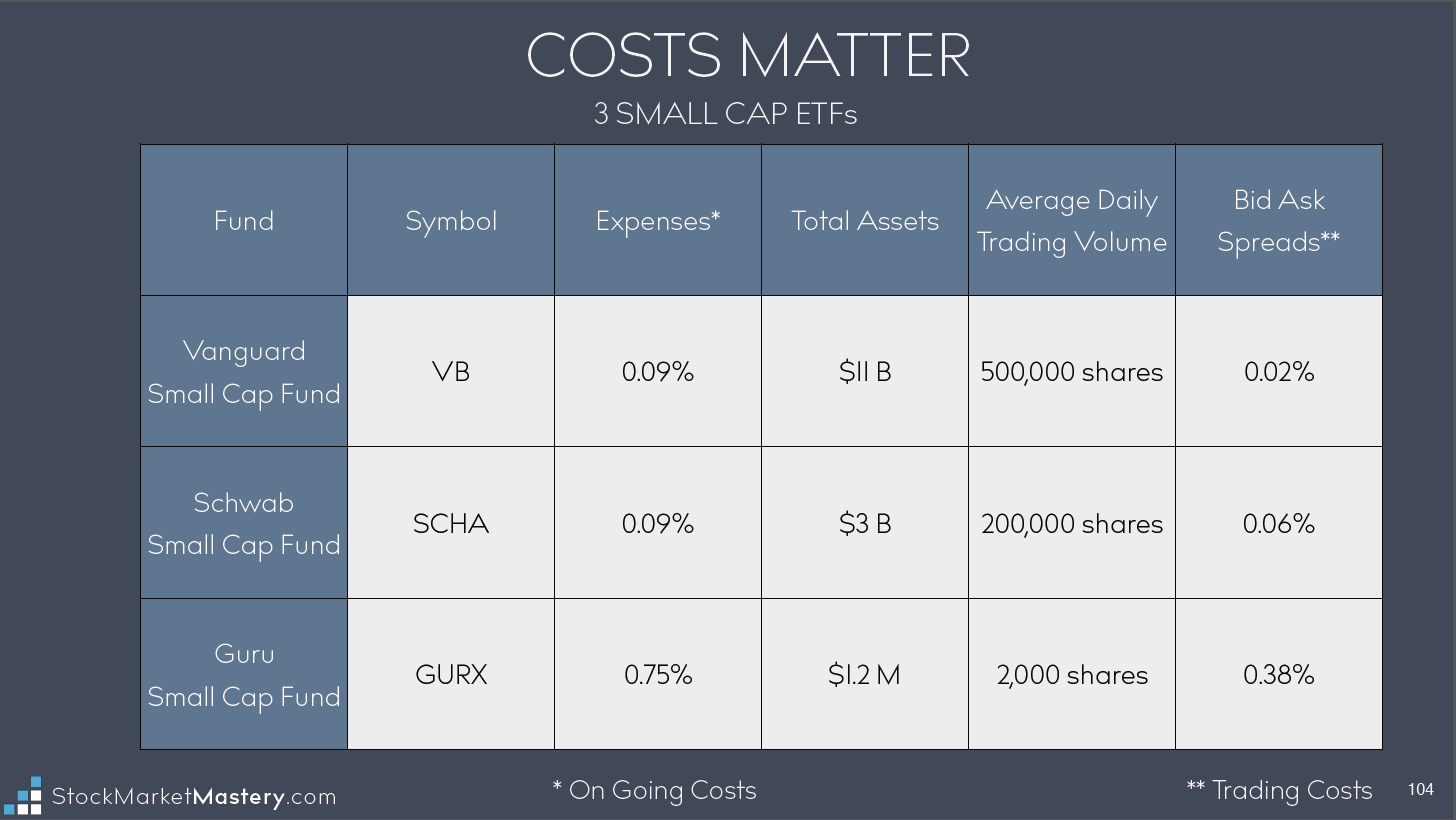 To paraphrase Bill Murray from the movie “Aloha,” the future is not something that just happens. It’s a brutal force with a great sense of humor that will nickel and dime your investments until it’s totally steamrolled your portfolio if you aren’t watching.
To paraphrase Bill Murray from the movie “Aloha,” the future is not something that just happens. It’s a brutal force with a great sense of humor that will nickel and dime your investments until it’s totally steamrolled your portfolio if you aren’t watching.
I will concede that it’s a personal rant of sorts, as I have been on the receiving end of excessive charges and fees. As a market observer, I constantly bear witness to many creative examples of the “steamrolling” force so eloquently cited by Murray.
A perfect example came from an attendee at the Asset Allocation seminar that Grayson and I taught a few months ago. I’ll call the investor ‘Ned’. In his survey comments, Ned wrote that he was guilty of ignoring the fees in some instances, but when we showed him the math in the form of the brothers David & John graph, he immediately realized that he was indeed the brother John in this graph.

The simple truth is that in John’s mind, he paid “only” one percent (1%) more a year in fees than his brother. But as a result of that seemingly innocuous difference, his brother David had 50% more in assets eventually.
Many investors offer lip service to the importance of lower fees and expenses, as well as the importance staying vigilant about possible hidden costs. But they then fail to embrace that very mentality and carry it through at the very time when they’re executing their trades and investment strategies.
I wish I could find some pertinent academic studies about the effect of fees similar to the research done by Roger Ibbotson Associates and Brinson Singer & Beebowes which convincingly shows that 91% of investors’ portfolio performance is determined by their asset allocation strategy. Asset allocation matters, fees matter, and both have an immense impact on your returns.
I teach – or some say, I rant – that the more you lower your expenses, the more you keep in your pocket, the more the magic of compounding can work for you, and the higher your average annual returns. Yes, it’s that simple.
I could go into many jaw-dropping examples – as we do in our DVD – but I’ll use three small cap ETFs to make my point here. Many investors think that if they buy ETFs instead of mutual funds, they’re prudently addressing the fees-minimization approach. Generally, that is certainly the case. But between different ETFs, there are varying factors that prudent investors need to consider because of their impact on one’s bottom line.
In this graph, note how expenses, total assets, average trading volume and bid-ask spreads all exhibit some significant variance amongst our three small cap ETFs. These variances each leave a significant impression on your bottom line to differing degrees.

You can explore other impactful cost reduction strategies that we present in our Asset Allocation DVD. Our objective is threefold: to highlight cost reduction opportunities; to convince you that choosing wisely amongst similar options amounts to a FREE lunch; and to indeed make cost-conscious investing part and parcel of your methodology.
https://store.stockcharts.com/collections/dvds/products/how-to-master-your-asset-allocation-profile
In closing, let me reinforce that wisdom about minimizing differing fees amounts to
investing empowerment. Fees are as toxic as Chernobyl residue to your long-term annual returns, so sharpen your focus and you’ll drive better investing outcomes with relatively little effort. It is a high leverage activity that’s well worthy of your attention.
Trade well; trade with discipline!
-Gatis Roze, MBA, CMT
Presenter of the Tensile Trading DVD, Stock Market Mastery.
Developer of the StockCharts.com Tensile Trading ChartPack.
P.S. Click HERE for information on my future appearances & seminars.
